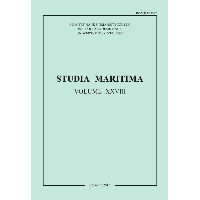Z problematyki współpracy i konkurencji w polsko-skandynawskich relacjach gospodarczych w okresie międzywojennym XX wieku
On the Cooperation and Competition in the Economic Relations between Scandinavia and Poland in the Interwar Period of the 20th Century (1918–1939)
Author(s): Bolesław HajdukSubject(s): Economic history, International relations/trade, Interwar Period (1920 - 1939), Financial Markets, Accounting - Business Administration
Published by: Wydawnictwo Naukowe Uniwersytetu Szczecińskiego
Keywords: economic relations between Scandinavia and Poland; competition and cooperation in the mutual relations; the interwar period of the 20th century;
Summary/Abstract: Undertaking cooperation (and appearing competition resulting from this cooperation) in the mutual economic relations between the Polish state, revived in November 1918, and the Nordic countries was possible after recognition de iure of Poland as a state by those countries and after signing economic agreements. The first attempts to establish economic cooperation took place even before the Polish state came into being. But a real economic cooperation between Poland and the Nordic countries did not flourish before the state’s frontiers had been finally fixed, the economic and navigational agreements had been signed, the economic relations had been stabilised, especially the financial ones, and the whole Polish economy had got started. In the field of economy Poland might cooperate (and compete) with the Nordic countries exporting there such goods as: coal, other fuels, smelting products, wood, textile products, and agricultural produce. On the other hand, the Scandinavian countries exported to Poland the following goods: edible fats, lubricants, fish and fish preserves, fertilisers, machines and technical equipment. The two regions cooperated also in the sphere of capital investments; the Nordic countries invested in the following Polish industries: electro-technical, wood, textile, metal, food, and match. The investments of the Swedish concern of Ivar Kreuger in Poland had a negative impact on the Polish match industry. A positive example of the cooperation between Poland and Scandinavia may be the activity of the Danish Company Højgaard & Schultz AS, which in the commercial port of Gdynia built all the breakwaters and quays, and prepared the technical documentation of many facilities. In addition the Company carried out some other works within and outside the port of Gdynia, among other things in the fishing port in Hel, Wielka Wieś (Władysławowo), and hydrotechnical facilities in Oksywie and the energetic company in Czarna Woda. Yet, a rise in the turnover in the ports of the Polish customs space caused some reactions on part of the Scandinavian ports in the sphere of freight, transit and passenger traffic. The shipbuilding industry was also an area of cooperation between Poland and Scandinavia. Poland purchased merchant ships, fishing vessels and engines in the Scandinavian shipyards and sold machines and equipment on the Nordic markets; in addition, Poland carried out repair works in its own shipyards for Nordic shipowners. Throughout this period an exchanges of students and engineers took place, especially with the Danish shipyards. Poland and Scandinavian countries cooperated also in the sphere of sea transport; mixed shipowner companies were created, some sea routes and some destination ports were operated by mixed companies. At the same time, it was visible that the competition between Polish and Nordic shipowners was growing in the passenger and freight traffic. An important field of cooperation (and competition) – especially with Denmark, which dated back to 1903 – was agriculture. Polish agricultural organisations and owners of big farms benefited from the achievements of Danish agriculture and were in constant contact with Danish centres of agricultural production, which represented a very high level. Poland sent to Denmark pupils and students of agricultural schools and agricultural specialists. Yet, the two countries competed on other markets, e.g. on the English market of bacon. Cooperation and competition in the relations between Poland and the Scandinavian countries were present also in the commercial fishing sector. The use of the Scandinavian, mainly Danish, fishing vessels, fishing equipment and instructors significantly contributed to the development of the Polish fishing sector within the Baltic Sea, Kattegat, Skagerrak and the North Sea. It is worth mentioning here the divergence and concurrence of opinions of the Polish and Scandinavian delegates revealed at the meetings of the International Council for the Exploration of the Sea headquartered in Copenhagen (ICES); Poland joined the ICES in 1922.
Journal: Studia Maritima
- Issue Year: 28/2015
- Issue No: 1
- Page Range: 89-124
- Page Count: 36
- Language: Polish

